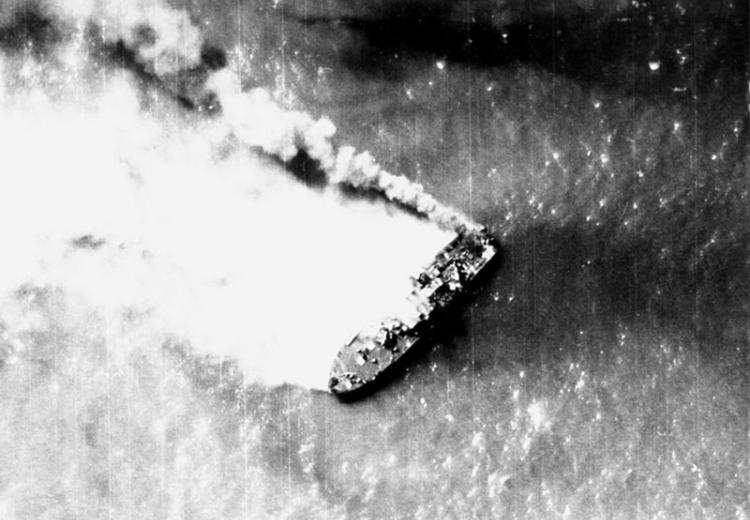The Gulf of Tonkin Resolution and Escalation of the Vietnam War

A North Vietnamese Shantou-class gunboat burns near Hon Ne Island, after an attack by aircraft from the U.S. Navy aircraft carrier USS Constellation, off North Vietnam's Lach Chao Estuary, August 5, 1964.
"On the first attack, the evidence would be pretty good. On the second one the amount of evidence we have today is less than we had yesterday. This resulted primarily from correlating bits and pieces of information eliminating double counting and mistaken signals. This much seemed certain: There was an attack. How many PT boats were involved, how many torpedoes were fired, etc. - all this was still somewhat uncertain. This matter may be of some importance since Hanoi has denied making the second attack."
– National Security Advisor McGeorge Bundy, at the White House staff meeting at 8 a.m. on August 5, 1964, discussing the Gulf of Tonkin incident.
"I believe that within the next century, future generations will look with dismay and great disappointment upon a Congress which is now about to make such a historic mistake."
– Senator Wayne Morse, during the Senate debate of the Gulf of Tonkin Resolution, August 6-7, 1964
In August 1964, a small military engagement off the coast of North Vietnam helped escalate the involvement of the United States in Vietnam; the Vietnam War would become the longest military engagement in American history prior to the Iraq and Afghanistan wars. Many historians now agree that the Gulf of Tonkin incident, in which many believed North Vietnamese ships had attacked American naval forces, may not have occurred in the way it was described at the time. The decisions made by President Lyndon B. Johnson and his top advisors, and the Congressional debate that ensued, resulted in a resolution giving LBJ authority to pursue a military policy in Vietnam that many people have come to believe was flawed and misguided.
Guiding Questions
What were the factors that led to Congressional action authorizing military force in the Gulf of Tonkin incident?
By studying this incident and the debate it has generated, what can we learn about twentieth century American democracy and military affairs?
Learning Objectives
Explain the chronology of events in the Tonkin Gulf incident in 1964.
Evaluate the decisions made by the Johnson Administration that led to their request for the Gulf of Tonkin Resolution.
Explain the major thrust of the Senate debate on the Gulf of Tonkin Resolution and why this measure passed with overwhelming support.
Analyze documents from the time to help students reach their own interpretation about these events and their significance.
Understand the process by which historians use declassified materials to understand how interpretations of events need to be modified.
Use the Tonkin Gulf incident to explore connections between the military, intelligence, Executive and Congressional branches in modern foreign affairs.
